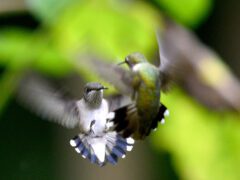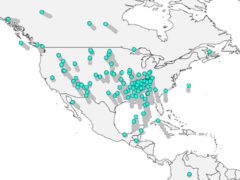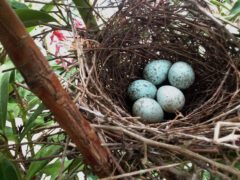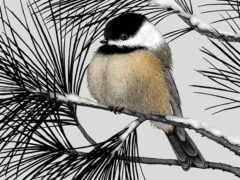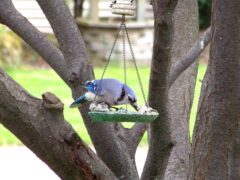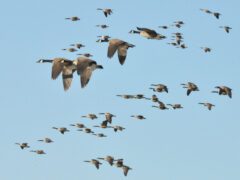The Four Keys to ID
- Size & Shape
A compact, small goose with a stubby bill and a relatively short neck compared to most geese.
Relative Size
Larger than a Mallard, smaller than a Canada Goose.

 goose-sized or larger
goose-sized or largerMeasurements
- Male
- Length: 23.3-24.5 in (59.2-62.2 cm)
- Weight: 41.1-61.3 oz (1165-1737 g)
- Wingspan: 41.3-42.5 in (105-108 cm)
- Female
- Length: 22.2-23.0 in (56.3-58.4 cm)
- Weight: 36.2-58.1 oz (1025-1648 g)
© Evan Lipton / Macaulay Library
- Color Pattern
Adults have a black head, neck, and breast with variable white neck markings. They have, brown wings, white undertail, and pale flanks and belly that can vary from pale brown (in eastern North America) to blackish (in the West). Juveniles have pale fringes on the wing coverts and little or no white on the neck.
© Beko Binder / Macaulay Library - Behavior
Brant spend most of the year in flocks. They forage by grazing or by swimming into shallow water and tipping forward to reach aquatic vegetation. Flocks form tight swarm-like groupings, less linear than skeins of Canada Geese. They give distinctive, grating calls that are often the first clue to their presence. On breeding grounds, they nest on the ground in small colonies near water.
- Habitat
Breeds in the Arctic on marshlands, islands, and tundra. Stops over in similar habitats to molt before migrating south. Winters on lagoons, estuaries, mudflats, and saltmarshes near sand spits, barrier beaches, and ocean shores.
© Ryan Schain / Macaulay Library
Regional Differences
In eastern North America, the Atlantic Brant has a mottled brown-and-white belly (subspecies hrota; known in the United Kingdom as Light-bellied Brent Goose). In the West, the much darker Black Brant (subspecies nigricans) is common. Birders around Puget Sound may also see a gray-bellied form, often called Gray-bellied Brant, which breeds only in the Parry Islands of northwestern Canada. Other subspecies occur in the species Old World range.



















































